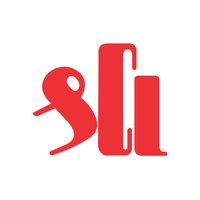
Shree Cement Ltd
NSE:SHREECEM


| US |

|
Johnson & Johnson
NYSE:JNJ
|
Pharmaceuticals
|
| US |

|
Berkshire Hathaway Inc
NYSE:BRK.A
|
Financial Services
|
| US |

|
Bank of America Corp
NYSE:BAC
|
Banking
|
| US |

|
Mastercard Inc
NYSE:MA
|
Technology
|
| US |

|
UnitedHealth Group Inc
NYSE:UNH
|
Health Care
|
| US |

|
Exxon Mobil Corp
NYSE:XOM
|
Energy
|
| US |

|
Pfizer Inc
NYSE:PFE
|
Pharmaceuticals
|
| US |

|
Palantir Technologies Inc
NYSE:PLTR
|
Technology
|
| US |

|
Nike Inc
NYSE:NKE
|
Textiles, Apparel & Luxury Goods
|
| US |

|
Visa Inc
NYSE:V
|
Technology
|
| CN |

|
Alibaba Group Holding Ltd
NYSE:BABA
|
Retail
|
| US |

|
3M Co
NYSE:MMM
|
Industrial Conglomerates
|
| US |

|
JPMorgan Chase & Co
NYSE:JPM
|
Banking
|
| US |

|
Coca-Cola Co
NYSE:KO
|
Beverages
|
| US |

|
Walmart Inc
NYSE:WMT
|
Retail
|
| US |

|
Verizon Communications Inc
NYSE:VZ
|
Telecommunication
|
Utilize notes to systematically review your investment decisions. By reflecting on past outcomes, you can discern effective strategies and identify those that underperformed. This continuous feedback loop enables you to adapt and refine your approach, optimizing for future success.
Each note serves as a learning point, offering insights into your decision-making processes. Over time, you'll accumulate a personalized database of knowledge, enhancing your ability to make informed decisions quickly and effectively.
With a comprehensive record of your investment history at your fingertips, you can compare current opportunities against past experiences. This not only bolsters your confidence but also ensures that each decision is grounded in a well-documented rationale.
Do you really want to delete this note?
This action cannot be undone.

| 52 Week Range |
23 935.05
29 560.8874
|
| Price Target |
|
We'll email you a reminder when the closing price reaches INR.
Choose the stock you wish to monitor with a price alert.

|
Johnson & Johnson
NYSE:JNJ
|
US |

|
Berkshire Hathaway Inc
NYSE:BRK.A
|
US |

|
Bank of America Corp
NYSE:BAC
|
US |

|
Mastercard Inc
NYSE:MA
|
US |

|
UnitedHealth Group Inc
NYSE:UNH
|
US |

|
Exxon Mobil Corp
NYSE:XOM
|
US |

|
Pfizer Inc
NYSE:PFE
|
US |

|
Palantir Technologies Inc
NYSE:PLTR
|
US |

|
Nike Inc
NYSE:NKE
|
US |

|
Visa Inc
NYSE:V
|
US |

|
Alibaba Group Holding Ltd
NYSE:BABA
|
CN |

|
3M Co
NYSE:MMM
|
US |

|
JPMorgan Chase & Co
NYSE:JPM
|
US |

|
Coca-Cola Co
NYSE:KO
|
US |

|
Walmart Inc
NYSE:WMT
|
US |

|
Verizon Communications Inc
NYSE:VZ
|
US |
This alert will be permanently deleted.
 Shree Cement Ltd
Shree Cement Ltd
Shree Cement Ltd
Investor Relations
In the rugged terrain of India’s cement industry, Shree Cement Ltd. stands as a formidable monolith, weaving its narrative from the mineral-rich regions of Rajasthan across the entire nation. Founded in 1979, the company has gradually cemented its reputation through an astute mix of business acumen and strategic foresight. Shree Cement’s journey is deeply rooted in its dedication to sustainability and efficiency. With an extensive network of manufacturing facilities, the company specializes in producing three core products: Cement, Clinker, and Power. Its operational blueprint is designed around optimizing cost structures while maintaining high quality, utilizing technologically advanced kilns and mills to ensure minimal environmental impact.
The beating heart of Shree Cement's business model is its commitment to power efficiency and production innovation. The company turns limestone, the essential raw ingredient, into cement by leveraging cutting-edge technology and vast coal reserves for energy generation. This converts operational energy needs into an economic growth engine, where the surplus electricity is sold to the grid, generating an ancillary revenue stream. Furthermore, Shree Cement's competitive edge is sharpened by its strategic expansion beyond domestic borders, most notably into the Middle East, enhancing its footprint and tapping into burgeoning markets. This diverse revenue model, supported by a robust distribution network and a keen eye on sustainable practices, keeps Shree Cement at the vanguard of the industry, blending tradition with modernity in its ongoing saga of growth.

In the rugged terrain of India’s cement industry, Shree Cement Ltd. stands as a formidable monolith, weaving its narrative from the mineral-rich regions of Rajasthan across the entire nation. Founded in 1979, the company has gradually cemented its reputation through an astute mix of business acumen and strategic foresight. Shree Cement’s journey is deeply rooted in its dedication to sustainability and efficiency. With an extensive network of manufacturing facilities, the company specializes in producing three core products: Cement, Clinker, and Power. Its operational blueprint is designed around optimizing cost structures while maintaining high quality, utilizing technologically advanced kilns and mills to ensure minimal environmental impact.
The beating heart of Shree Cement's business model is its commitment to power efficiency and production innovation. The company turns limestone, the essential raw ingredient, into cement by leveraging cutting-edge technology and vast coal reserves for energy generation. This converts operational energy needs into an economic growth engine, where the surplus electricity is sold to the grid, generating an ancillary revenue stream. Furthermore, Shree Cement's competitive edge is sharpened by its strategic expansion beyond domestic borders, most notably into the Middle East, enhancing its footprint and tapping into burgeoning markets. This diverse revenue model, supported by a robust distribution network and a keen eye on sustainable practices, keeps Shree Cement at the vanguard of the industry, blending tradition with modernity in its ongoing saga of growth.





























 You don't have any saved screeners yet
You don't have any saved screeners yet
